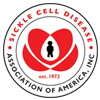Trusted Resources: Evidence & Education
Scientific literature and patient education texts
Translating sickle cell guidelines into practice for primary care providers with Project ECHO
source: Medical education online
year: 2016
authors: Shook LM, Farrell CB, Kalinyak KA, Nelson SC, Hardesty BM, Rampersad AG, Saving KL, Whitten-Shurney WJ, Panepinto JA, Ware RE, Crosby LE
summary/abstract:Background:
Approximately 100,000 persons with sickle cell disease (SCD) live in the United States, including 15,000 in the Midwest. Unfortunately, many patients experience poor health outcomes due to limited access to primary care providers (PCPs) who are prepared to deliver evidence-based SCD care. Sickle Treatment and Outcomes Research in the Midwest (STORM) is a regional network established to improve care and outcomes for individuals with SCD living in Indiana, Illinois, Michigan, Minnesota, Ohio, and Wisconsin.
Methods:
STORM investigators hypothesized that Project ECHO® methodology could be replicated to create a low-cost, high-impact intervention to train PCPs in evidence-based care for pediatric and young adult patients with SCD in the Midwest, called STORM TeleECHO. This approach utilizes video technology for monthly telementoring clinics consisting of didactic and case-based presentations focused on the National Heart, Lung and Blood Institute (NHLBI) evidence-based guidelines for SCD.
Results:
Network leads in each of the STORM states assisted with developing the curriculum and are recruiting providers for monthly clinics. To assess STORM TeleECHO feasibility and acceptability, monthly attendance and satisfaction data are collected. Changes in self-reported knowledge, comfort, and practice patterns will be compared with pre-participation, and 6 and 12 months after participation.
Conclusions:
STORM TeleECHO has the potential to increase implementation of the NHLBI evidence-based guidelines, especially increased use of hydroxyurea, resulting in improvements in the quality of care and outcomes for children and young adults with SCD. This model could be replicated in other pediatric chronic illness conditions to improve PCP knowledge and confidence in delivering evidence-based care.
DOI: 10.3402/meo.v21.33616
read more full text
Related Content
-
Coronavirus Preparedness for People With Chronic Diseases – WebinarEvent Date: Mar. 13, 2020 Event...
-
Identifying Outcomes for Sickle Cell Disease Clinical Trials is Aim of coreSCDThe Green Park Collaborative (GPC) is wo...
-
5th Annual World Sickle Cell Day 24-Hour Sickle Cell-a-ThonCayenne Wellness Center and Children's F...
-
Blood Transfusions: What You Need to Know and Do (Part 2: Blood Matching)https://www.youtube.com/watch?v=bs4bRApy...
-
10th Annual Sickle Cell Disease Therapeutics Conference – VirtualThe Annual Sickle Cell Disease Therapeut...
-
Sickle Cell Disease Coalition: Build Your Own SCD School BinderThe Build Your Own SCD School Binder off...
-
National Sickle Cell Advocacy Day 2020 — Sickle Cell Disease Association of America – CANCELEDPlease join the Sickle Cell Disease Asso...
To improve your experience on this site, we use cookies. This includes cookies essential for the basic functioning of our website, cookies for analytics purposes, and cookies enabling us to personalize site content. By clicking on 'Accept' or any content on this site, you agree that cookies can be placed. You may adjust your browser's cookie settings to suit your preferences. More Information
The cookie settings on this website are set to "allow cookies" to give you the best browsing experience possible. If you continue to use this website without changing your cookie settings or you click "Accept" below then you are consenting to this.




 +myBinder
+myBinder
